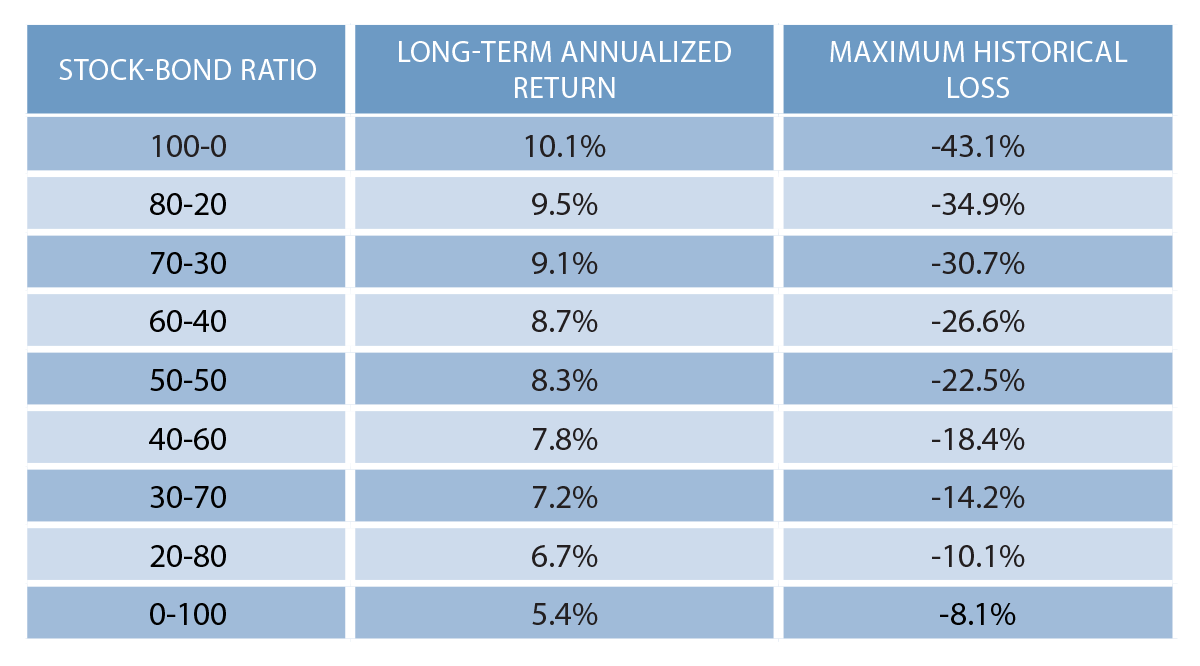
The key lesson: Bonds may be a reliable diversifier when economic growth is slowing – but not necessarily when inflation is increasing. What is the key lesson from this, according to Blackrock? This is their conclusion: The table above shows that 2022 is not a complete outlier: it has happened before, but not frequently! However, in 2022 this has not been the case:Īnnual returns on stocks and bonds (60/40 portfolio strategy). Below is a plot of the 200-day correlation between S&P 500 and Treasury bonds.Īs you can see, in times of turbulence in the stock market (marked by blue circles) correlation has tended to be low or negative (Treasuries/bonds outperforming stocks). The key is correlation, or perhaps more precisely, non-correlation. By allocating a sizeable portion to bonds, the model is designed to minimize risk while generating a consistent rate of return over time, even during periods of equity market volatility. In theory, the 60/40 portfolio provides adequate diversification that allows you to maintain balance in your portfolio when the market is high and when it’s low. What Happens To Stocks When Bonds Go Down?.What Happens To Stocks When Bonds Go Up?.To better understand this relationship, please read our previous articles on the topic: The rise in bond prices provides helps to cushion overall returns when stocks are falling. Here is how: when interest rates are cut, bond yields drop but bond prices go up. Federal Reserve typically cuts interest rates to support the economy. Stocks tend to suffer in a recession due to less economic growth, while bonds can rally because the U.S. Usually, when growth assets, like stocks, sell off due to economic slowdowns, safer assets like bonds appreciate as investors seek stability. The model works because stocks and bonds tend not to correlate most of the time. While the balance of this 60/40 mix can be adjusted based on an investor’s time horizon, risk tolerance, and financial goals, its stock-bond combination remains the same, which is why it is considered a “diversified” portfolio. By including international stocks and bonds, you can construct a globally diversified 60/40 portfolio. But that would mean having your entire portfolio in US-based investments. In its simplest form, it could be achieved by investing in the S&P 500 ETF and U.S. It consists of a diversified portfolio of stocks and bonds. The 60/40 portfolio is one that allocates 60% of capital to equities and 40% to bonds. The 60/40 portfolio strategy – ending remarks.60/40 portfolio alternative no 6: add tail risk strategies.60/40 portfolio alternative no 5: add international equity markets.60/40 portfolio alternative no 4: add crypto.60/40 portfolio alternative no 3: add gold.


#Difference bond stock mix portfolio drawdown how to
How to build a 60/40 portfolio/strategy.In this post, we take a look at the 60/40 portfolio and its performance, and at the end of the article, we look at ways you can improve the 60/40 strategy. However, by including international stocks and bonds, one can construct a globally diversified 60/40 portfolio. Treasuries, which give a US-only portfolio.

The 60/40 portfolio strategy is one that allocates 60% of capital to equities and 40% to bonds. But given the changing economic situations in 2022 and the 60/40 portfolio’s 16.1% decline in the first half of the year 2022, one might wonder whether the 60/40 portfolio is out of season or simply dead! Are you wondering what the 60/40 portfolio strategy is? For many years, financial advisors and experts recommend the 60/40 portfolio because of its simplicity and favorable risk-adjusted returns.

Determining the right mix of assets to help you reach your short-term and long-term financial goals is the key to building a winning investment portfolio.


 0 kommentar(er)
0 kommentar(er)
